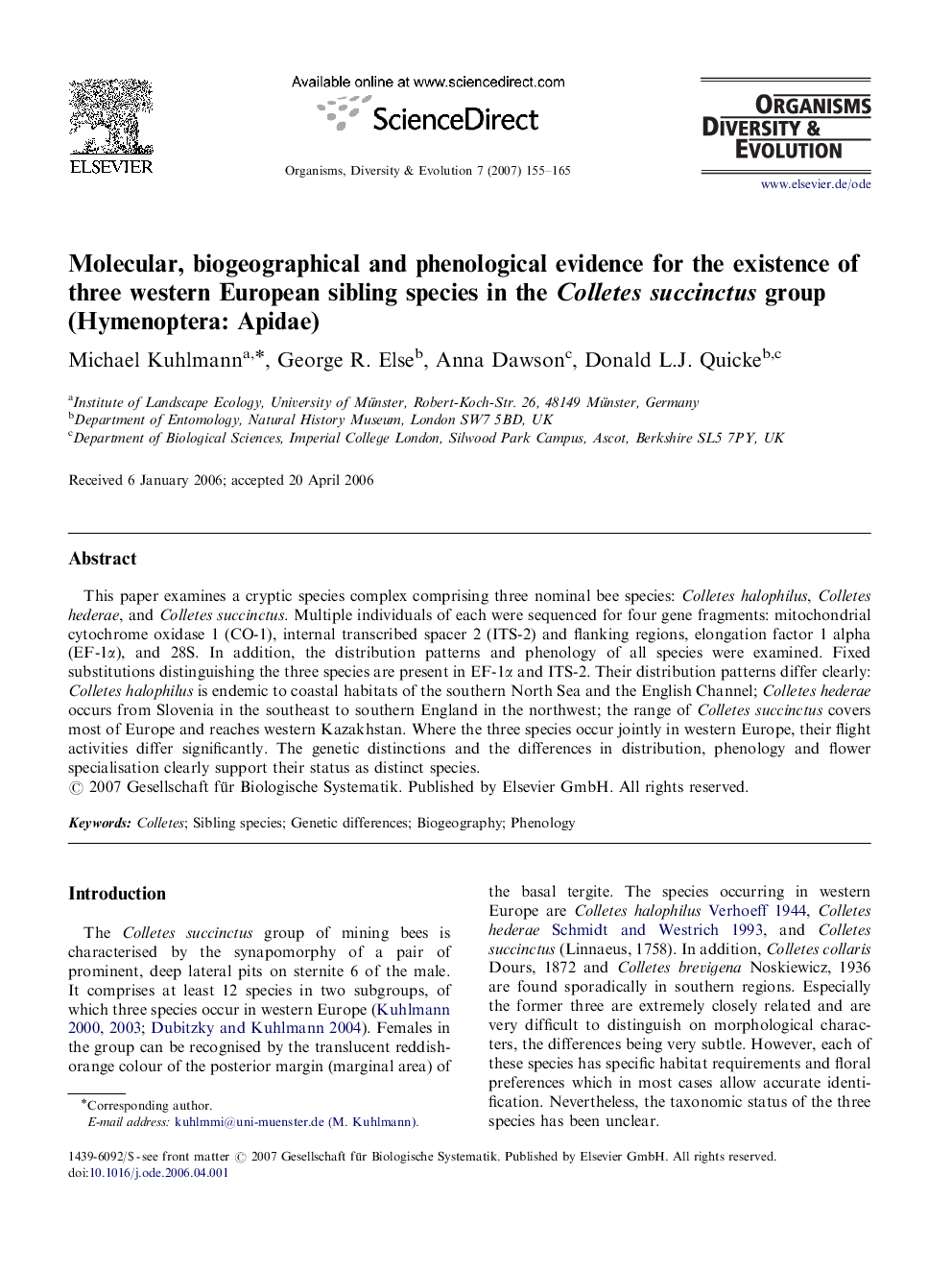| Article ID | Journal | Published Year | Pages | File Type |
|---|---|---|---|---|
| 4458730 | Organisms Diversity & Evolution | 2007 | 11 Pages |
This paper examines a cryptic species complex comprising three nominal bee species: Colletes halophilus, Colletes hederae, and Colletes succinctus. Multiple individuals of each were sequenced for four gene fragments: mitochondrial cytochrome oxidase 1 (CO-1), internal transcribed spacer 2 (ITS-2) and flanking regions, elongation factor 1 alpha (EF-1α), and 28S. In addition, the distribution patterns and phenology of all species were examined. Fixed substitutions distinguishing the three species are present in EF-1α and ITS-2. Their distribution patterns differ clearly: Colletes halophilus is endemic to coastal habitats of the southern North Sea and the English Channel; Colletes hederae occurs from Slovenia in the southeast to southern England in the northwest; the range of Colletes succinctus covers most of Europe and reaches western Kazakhstan. Where the three species occur jointly in western Europe, their flight activities differ significantly. The genetic distinctions and the differences in distribution, phenology and flower specialisation clearly support their status as distinct species.
